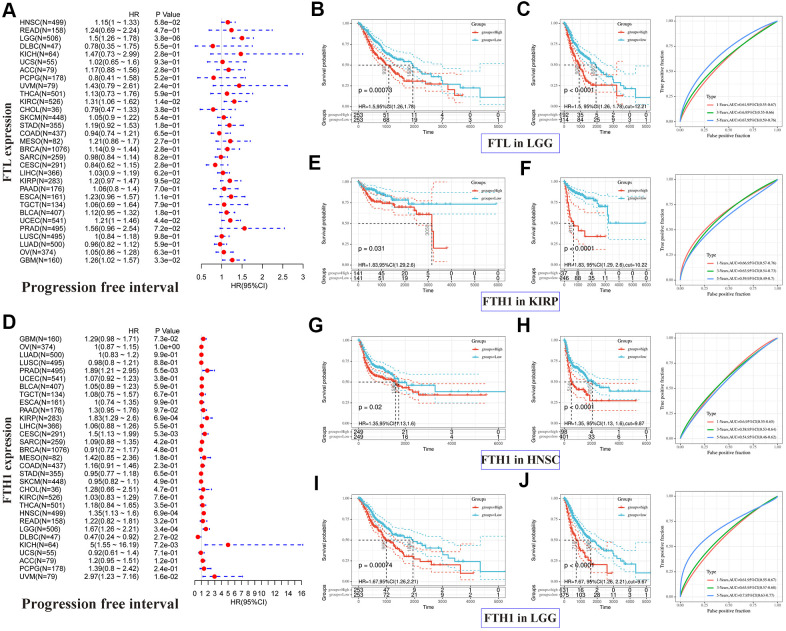Figure 3.
Positive correlations between high FTL and FTH1 expressions and poor PFI in several tumors. (A) Univariate analysis showed the positive association between high FTL level and poor PFI in patients with LGG (P = 3.8 × 10−6), KIRC (P = 1.4 × 10−2), UCEC (4.4 × 10−2), GBM (P = 3.3 × 10−2). (B, C) High FTL mRNA level was related to poor OS in LGG (HR 1.5, 95% CI 1.26–1.78, P = 7.3 × 10−4). (D) Univariate analysis showed the positive association between high FTH1 level and poor PFI in patients with PRAD (P = 5.5 × 10−3), KIRP (P = 6.9 × 10−4), CESC (P = 5.3 × 10−3), HNSC (P = 6.9 × 10−4), LGG (P = 3.4 × 10−4), KICH (P = 7.2 × 10−3), UVM (P = 1.6 × 10−2), and the negative association with DLBC (P = 2.7 × 10−2). (E–J) High FTH1 mRNA level was related to poor PFI in KIRP (HR 1.83, 95% CI 1.29–2.6, P = 3.1 × 10−2), HNSC (HR 1.35, 95% CI 1.13–1.6, P = 2 × 10−2), LGG (HR 1.67, 95% CI 1.26–2.21, P = 7.4 × 10−4). Only the tumors with P < 0.001 in univariate analysis will do the further Kaplan–Meier and ROC analysis.

